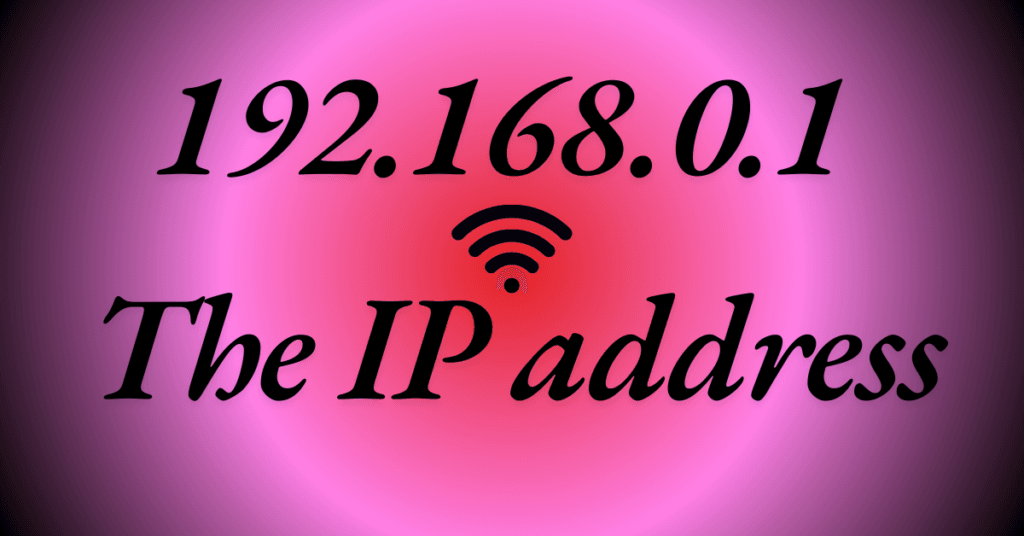192.168.0.1: Login The IP address is one of the most commonly used addresses for admin login local networks, often assigned to home routers and other devices. Understanding how to access this IP address, manage network settings, and configure WiFi options is essential for ensuring secure and efficient network management.
What is the 192.168.0.1 IP Address?
The 192.168.0.1 IP address is a private IPv4 address reserved by the Internet Assigned Numbers Authority (IANA) for internal network use. It is used by various manufacturers as a default gateway address for routers and other networking devices. This address allows users to access the admin panel, where network configurations, security settings, and device controls are managed.

Key Features of 192.168.0.1
- Access to Router Settings: Enables users to adjust network configurations, update firmware, and configure security settings.
- DHCP Configuration: Allows customization of IP address allocation, subnet masks, and default gateways within a local network.
- User Authentication: Provides login access for authorized users to secure the network from unauthorized access.
How to Log in to 192.168.0.1
To access the router’s admin panel via 192.168.0.1, follow these steps:
- Connect to the Network: Ensure your device is connected to the router, either wirelessly or via an Ethernet cable.
- Open a Browser: Launch a web browser and enter
https://192.168.0.1in the address bar. - Enter Login Credentials: Upon loading, the router login page will prompt you for a username and password. The default credentials are often “admin” for both fields, though these may vary by manufacturer.
Troubleshooting Login Issues
If you encounter issues while logging in to 192.168.0.1, consider the following steps:
- Check Network Connection: Ensure you are connected to the correct network.
- Restart the Router: Rebooting can resolve connectivity issues.
- Verify the Default Gateway: Confirm that 192.168.0.1 is the correct gateway by checking your device’s IP settings.
Common Uses for the 192.168.0.1 IP Address
The primary function of the 192.168.0.1 IP address is to access the router’s admin panel, where several important network configurations and security settings are managed.
1. Network Security Settings
Ensuring the security of your network is critical. Within the router’s admin panel, you can:
- Change Default Login Credentials: Replacing default usernames and passwords is essential for securing your network.
- Enable WPA3 Encryption: Opt for the latest WPA3 encryption standard for enhanced WiFi security.
- Set up MAC Address Filtering: Restrict access to specific devices by managing a whitelist of MAC addresses.
2. WiFi Configuration and Management
Configuring WiFi settings on 192.168.0.1 allows you to control aspects such as:
- SSID Configuration: Set a unique name for your WiFi network for easy identification.
- Channel Selection: Choose the least congested channel to improve WiFi performance.
- Guest Network Setup: Enable a guest network to separate visitor access from main devices.
3. DHCP and IP Management
By managing DHCP and IP settings through 192.168.0.1, you can control how devices within your network obtain IP addresses:
- IP Range Configuration: Define the range of IP addresses assigned to connected devices.
- Lease Time Adjustment: Set the duration that a device holds an IP address.
- Static IP Assignment: Reserve specific IP addresses for critical devices like printers or servers.
4. Parental Control Features
Many routers allow for parental controls to restrict content and manage the time users spend online. These settings can be managed on the admin panel via 192.168.0.1:
- Content Filtering: Block specific websites or types of content.
- Time Scheduling: Set access restrictions to manage internet usage times.
- Device Control: Limit or monitor devices connected to the network.
Security Best Practices for 192.168.0.1
To maximize network security, consider the following best practices:
- Change Default Passwords: Update the admin login credentials immediately after accessing the router.
- Enable Encryption: Use WPA3 encryption to secure WiFi connections.
- Regularly Update Firmware: Keep the router’s firmware updated to protect against vulnerabilities.
- Disable Remote Access: Only enable remote management if necessary and secure it with a strong password.
- Create a Guest Network: Prevent unauthorized access to main devices by setting up a separate guest network.
Troubleshooting Common Issues with 192.168.0.1
If you experience difficulties with accessing or configuring the 192.168.0.1 IP address, these troubleshooting steps may help:
- Reset the Router: If all else fails, reset the router to factory settings (note: this will erase all custom settings).
- Check Router Documentation: Each manufacturer has specific default login credentials; check the manual if unsure.
- Clear Browser Cache: Sometimes, cached data can prevent access. Clearing your browser’s cache may resolve the issue.
Conclusion
The 192.168.0.1 IP address is essential for accessing the router’s admin panel and managing a wide range of network settings. From security adjustments to WiFi management and device control, this IP provides users with comprehensive access to their network. By understanding how to effectively navigate and configure settings within 192.168.0.1, users can ensure a secure, efficient, and well-managed network environment.